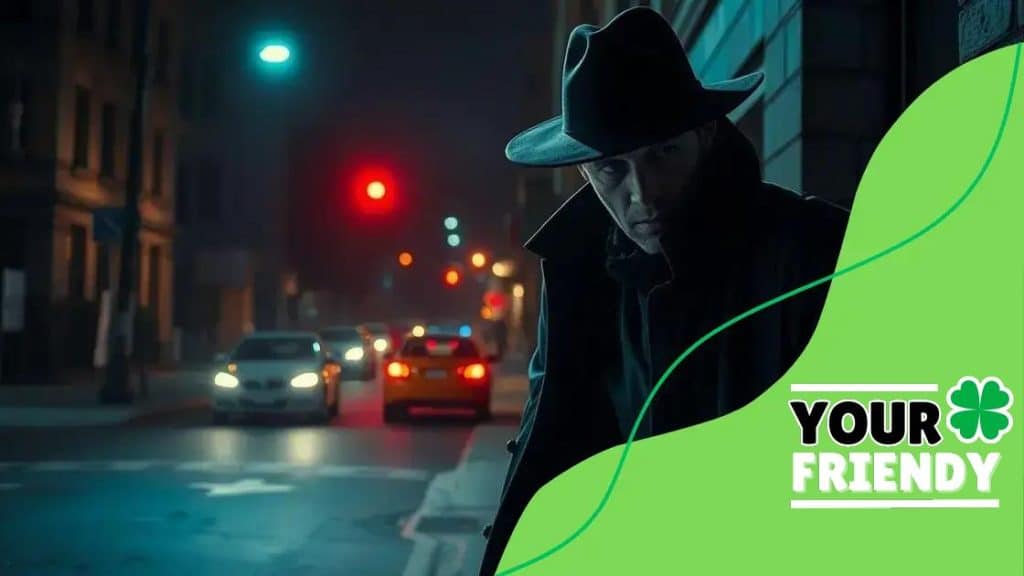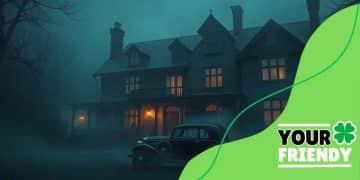Murder plots that grip viewers: exploring the mystery

Anúncios
The future of crime storytelling includes immersive experiences, the popularity of true crime, and the influence of streaming platforms, shaping how narratives engage audiences with complex characters and socially relevant themes.
Murder plots that grip viewers have a way of captivating our imaginations, pulling us into thrilling narratives where each twist leaves us breathless. Curious about how these plots are crafted? Let’s dive into the elements that make them irresistible.
Anúncios
Top 5 murder plots that left audiences breathless
During the fascinating world of film and television, a few murder plots stand out, leaving audiences on the edge of their seats. These stories grip us not just with their suspense but also with clever twists and characters that keep viewers guessing.
1. The Usual Suspects
This film begins with a simple heist but evolves into a complex web of deception. The characters are carefully crafted, each with a secret that unravels as the story progresses.
2. Se7en
A detective duo hunts a serial killer who uses the seven deadly sins as his modus operandi. The chilling atmosphere and shocking finale make this plot unforgettable.
Anúncios
3. Gone Girl
When a wife goes missing, all signs point to her husband as the prime suspect. The dual narratives in this film reveal dark secrets, engaging the audience in a psychological thriller.
4. Knives Out
A modern twist on the classic whodunit, this film features a star-studded cast and a plot full of red herrings. The humor and clever dialogue enhance the thrilling mystery.
5. Rear Window
In this Hitchcock classic, a man believes he has witnessed a murder from his apartment window. The build-up of tension and suspense offers an exemplary storyline that keeps viewers anxiously involved.
These films share a few characteristics that make their murder plots so compelling. First, they have well-developed characters that viewers care about. Second, they utilize unexpected twists that challenge our assumptions. Finally, they create an emotional connection, pulling audiences deeper into the narrative.
Viewers leave these films feeling a mix of satisfaction and intrigue, eager to discuss every plot twist with friends. The enduring popularity of these murder plots illustrates our fascination with mystery and suspense, making them a consistent draw in cinema.
How storytelling techniques enhance suspense
Storytelling techniques play a crucial role in building suspense within a narrative. They engage the audience, drawing them into the story while keeping them guessing about what will happen next. By employing various methods, writers can craft narratives that captivate and thrill.
Building Tension
One of the most effective ways to enhance suspense is by gradually building tension. This can be achieved by introducing conflicts and obstacles that challenge the characters. As the story progresses, the stakes become higher, and the audience is left wondering how it will all unfold.
- Utilizing cliffhangers at key moments
- Introducing unexpected twists
- Creating dilemmas that force character decisions
Emotional Connection
Another technique is to create strong emotional connections between the audience and the characters. When viewers care deeply about what happens to a character, they are more invested in the outcome. This emotional engagement intensifies the suspense. Writers often explore the internal struggles of characters, adding depth and complexity to their motivations.
At times, the use of foreshadowing can also enhance suspense. By providing subtle hints about future events, writers offer clues that can lead to increased anticipation. The audience begins to piece together the puzzle, enhancing their engagement with the story.
The strategic pacing of a story is vital in maintaining suspense. Quickening the pace during tense moments can create a sense of urgency, while slowing it down during critical reveals allows the audience to absorb the gravity of the situation. This ebb and flow of pacing helps to sustain interest and keep the audience on edge.
The role of character development in thrillers

Character development plays a vital role in thrillers, enhancing the story’s suspense and emotional impact. When characters are well-developed, viewers become more invested in their journeys, which amplifies the thrill of the narrative.
Creating Relatable Characters
Relatable characters allow the audience to connect with the story on a personal level. When viewers can see parts of themselves in a character, they become more emotionally attached. This connection makes the stakes feel real and urgent, heightening the tension throughout the film.
- Characters with flaws make them feel authentic.
- Backstories provide depth and motivation.
- Relationships among characters can complicate plots, creating interesting dynamics.
Transformation and Growth
Transformation is another key aspect of character development. Thrillers often feature characters who undergo significant change in response to the events they face. These transformations can result from external pressures, such as facing a notorious criminal or navigating complex moral dilemmas.
A character’s growth often reflects the theme of the story. For example, a weak individual might become strong through their experiences, symbolizing resilience and courage. This journey not only captivates audiences but also contributes to deeper emotional resonance.
Additionally, a well-defined antagonist adds layers to the narrative. When villains are complex, they challenge the protagonist, making the conflict more compelling. Viewers remain engaged as they try to predict each character’s next move.
Writers can skillfully layer different personalities, motivations, and goals for the characters, creating a rich tapestry that enhances the overall story. When characters are invested in their battles, the audience feels the suspense building, not just through action, but through the emotional stakes at play.
Cultural impact of murder mysteries on media
The cultural impact of murder mysteries on media is profound. These stories have shaped not just television and films but also books and digital content. They engage viewers and readers, creating a thirst for the unknown and the unexpected.
Influence on Literature
Murder mysteries have played a crucial role in literature. Authors like Agatha Christie and Arthur Conan Doyle created timeless characters like Hercule Poirot and Sherlock Holmes. Their works set the standard for the genre, influencing countless writers who followed.
- These stories emphasize intricate plotting and clever twists.
- They explore deep psychological themes.
- The genre promotes critical thinking and problem-solving among readers.
Television and Film Evolution
In television and film, murder mysteries have evolved over time. Classic shows like Columbo and newer series like True Detective highlight how the genre adapts to audience preferences. Each adaptation introduces fresh storytelling techniques while respecting traditional elements.
Viewers are often drawn to true crime documentaries and series that explore real-life murder cases. These programs tap into our natural curiosity and desire for justice, creating a strong connection with audiences.
The impact extends to various formats, including podcasts and online content. True crime podcasts, for instance, attract millions of listeners who engage with cold cases and solved crimes. This trend demonstrates how the digital age has transformed how we consume murder mysteries.
Murder mysteries also allow for cultural reflection. They often address societal issues such as crime, justice, and morality. By reflecting on these themes, they provoke discussions that resonate with contemporary audiences, making the genre relevant across generations.
Future trends in crime storytelling
The future of crime storytelling is exciting and constantly evolving. As technology advances and audience preferences shift, new trends emerge, shaping how we perceive and engage with crime narratives.
Immersive Experiences
One major trend is the rise of immersive storytelling. With virtual reality (VR) and augmented reality (AR), audiences can experience crime stories in interactive environments. This engagement allows viewers to step into the shoes of characters, enhancing their emotional connection to the narrative.
- VR can transport viewers to crime scenes.
- AR can provide interactive elements that enhance understanding.
- Gamified experiences allow audiences to solve crimes themselves.
True Crime Popularity
True crime continues to captivate audiences, with a growing demand for real-life stories that explore criminal cases. Podcasts, documentaries, and series delve into high-profile cases, revealing the darker aspects of human nature. This trend reflects society’s fascination with the complexities of crime and justice.
Additionally, the availability of streaming platforms allows for more in-depth storytelling. These platforms host miniseries that provide detailed explorations of complex cases while maintaining high production quality. Viewers can binge-watch or delve deeply into the narratives, enhancing their understanding.
Social media also plays a significant role, enabling audiences to discuss stories in real-time. Hashtags and online forums create communities where fans dissect plots and share insights, fostering a more interactive storytelling experience.
As society evolves, crime storytelling adapts by addressing current social issues, such as systemic inequality and wrongful convictions. By incorporating these themes, narratives resonate more with audiences, prompting reflection and discussion. This approach to storytelling highlights the responsibility of creators to engage with real-world problems, showcasing the cultural relevance of crime narratives.
FAQ – Frequently Asked Questions about Crime Storytelling
What are the main trends shaping the future of crime storytelling?
Immersive experiences through VR/AR, the popularity of true crime, and the impact of streaming platforms are key trends.
How does character development enhance crime stories?
Well-developed characters create emotional connections, making the narrative more engaging and suspenseful for the audience.
Why are true crime stories so popular?
True crime captivates audiences by exploring real-life cases, offering a deep dive into the complexities of crime and justice.
How do social media platforms influence crime storytelling?
Social media allows audiences to discuss, share insights, and engage with crime stories in real-time, fostering community discussions.





